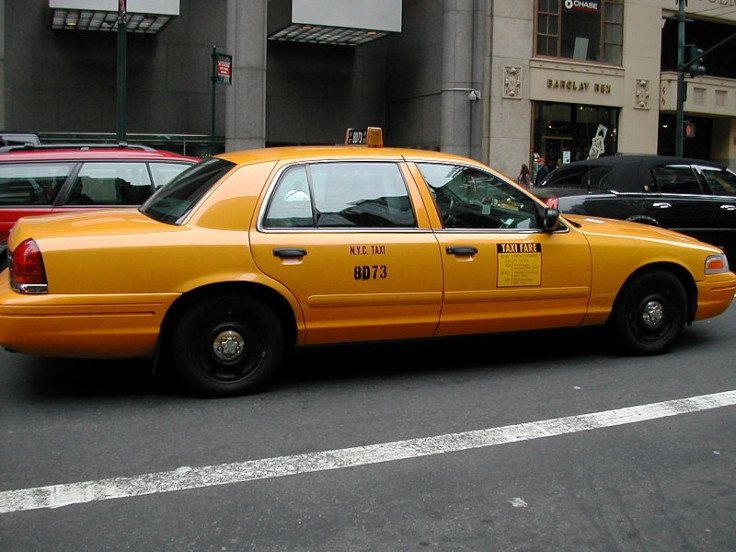Why Bloomberg's Plan for More New York City Taxis Is Stupid

What if someone told you that the City of New York was consciously and deliberately acting to increase traffic congestion by 12 percent and sacrificing $500 million a year in lost time to travelers and commercial freight in exchange for a one-time $1 billion fee? You would probably tell them that they are crazy, that America's biggest city would never do something so clearly economically and socially stupid, that surely the city's movers and shakers would not sacrifice the long-term fortune of the Big Apple for short-term gain, that they must be better at basic arithmetic than to do something so undeniably boneheaded.
Yet there is a $635 million to $1 billion worm nibbling at the healthy fruit of New York. New York City is about to embark on an auction of 2,000 new taxi medallions. The auction would raise as much as $1 billion for the city but at the cost of putting 2,000 new traffic menaces on the road. Now then, you must be thinking that taxis aren't some kind of creeping, insidious evil -- they're just harmless yellow cars that drive in circles around Midtown Manhattan and take fat tourists and flush bankers to whatever dens of depravity and New York kitsch they inhabit. At face value, you're right, but taxis have outsized impacts on traffic congestion that could prove debilitating to the city.
The NYC Taxi & Limousine Commission will auction 2,000 new yellow taxi medallions, which are required for any car operated as a taxi in New York. The auction effectively means that the city will increase the fleet of cabs from its current level of 13,000 to 15,000. The auction, which is currently delayed by a lawsuit filed by cab owners disgruntled about the imminent increase in competition, would net the city between $635 million and $1 billion.
A $1 billion windfall for the city isn't the only result of the medallion auction, though. Transportation economist Charles Komanoff, who has studied traffic in New York for almost 40 years, says, according to NPR, that the additional taxis will increase congestion and, thus, travel times by 12 percent. That increased travel time will cost roughly $500 million per year.
"Every additional yellow cab is tantamount in its impact on traffic to having 40 additional private cars drive in from the boroughs or the suburbs to the heart of the city," Komanoff said.
The 2,000 additional taxis will decrease the time it takes to hail a cab by about one minute, but that gain in wait time will be more than offset by the increased congesting and travel time. Essentially, by adding 2,000 cabs to the fleet, the city is increasing the load on New York's road network by the equivalent of 80,000 cars. Taxis have such an outsized impact on traffic patterns and congestion because, unlike private and commercial vehicles, they are in constant operation and when they don't have passengers they circle looking for fares.
"Adding another 2,000 cabs to New York in the city center does increase congestion," Regional Plan Association Director of Transportation Programs Rich Barone said Monday. "You don't have to be an expert to see when you walk through Manhattan, especially in Midtown, you see the majority of traffic is cabs."
Even at peak hours when cab utilization is maximized, taxi traffic can be highly erratic as drivers cut in and out of traffic to pick up and drop off passengers to maximize fares. "Cabs are inherently inefficient because they cruise particularly in the off period," Barone said. While the Taxi & Limousine Commission has tried various plans to make cabs more efficient (defined loading zones for instance), they have been notoriously unsuccessful, and there is not a clear deficit of taxi service in New York that would require additional vehicles.
So if the current taxi fleet is already sufficiently large, cabs are a fundamentally inefficient mode of transportation, and the fleet expansion would cost the city $500 million per year in lost time, not to mention a staggering environmental impact, why is New York planning to add cabs at all? The city has said that it needs to increase wheelchair access to the taxi fleet by mandating new vehicles. Yet the city already operates door-to-door paratransit service that is seen as being largely effective. There is no clear transportation, mobility or long-term economic benefit of adding more taxis, but there is a short-term financial incentive.
While New York will technically have a balanced budget for fiscal year 2013, Mayor Michael Bloomberg has predicted that "New York City will still face budget gaps of approximately $3 billion in FY 2014, $3.5 billion in FY 2015 and $3.4 billion in FY 2016." The fiscal year 2013 budget was originally going to run a $1.44 billion deficit, but the inclusion of $635 million (revised down from the city's initial estimate of $1 billion) from the sale of the 2,000 new taxi medallions accounted for a large part of the difference in balancing the current year's budget. Moreover, total revenue from taxi medallions will equal $1.46 billion for fiscal year 2013.
Effectively, the Bloomberg administration is auctioning efficient, timely travel for the city and its businesses to the tune of $500 million per year in lost time to partially make up a 2013 budget shortfall. While the money from the medallion auction will help plug a gap in this year's budget, it will saddle the city with long-term congestion that will damage the environment and cost citizens half a billion dollars each year. The arithmetic doesn't make sense. Losing $500 million every year and making every driver's day a little more miserable doesn't seem like it's worth a relatively paltry sum between $635 million and $1 billion.
© Copyright IBTimes 2025. All rights reserved.





















